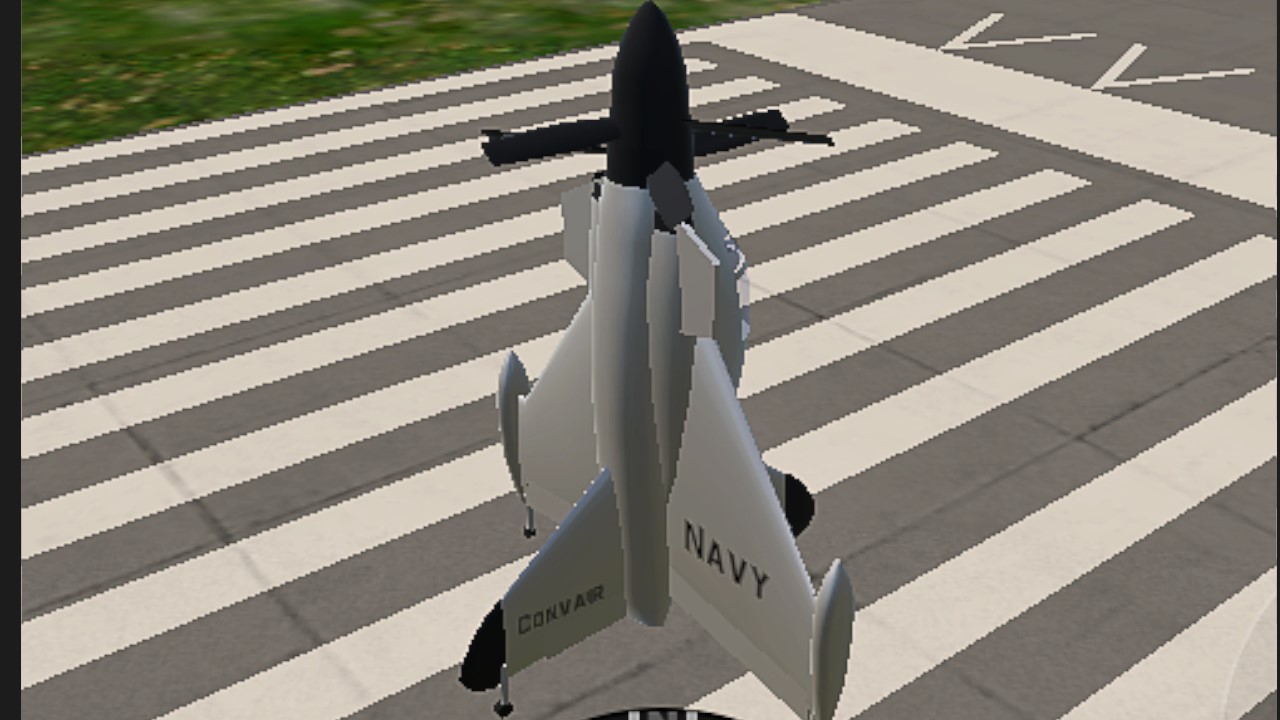The Convair XFY Pogo was an experiment in vertical takeoff and landing (VTOL) tail-sitter. The Pogo had delta wings and three-bladed contra-rotating propellers powered by a turboprop engine. It was intended to be a high-performance fighter aircraft capable of operating from small warships. Landing the XFY-1 was difficult, as the pilot had to look over his shoulder while carefully working the throttle to land.
After World War II, the Cold War prompted the United States Army and Navy to study VTOL operations. It was envisaged to protect task forces, convoys or any fleet, even without aircraft carriers, by placing VTOL aircraft on any ship. These fighters would be housed within a conical protective housing, saving limited deck space available aboard ships. They would provide first line of airborne defense and reconnaissance capability, before more aircraft could be scrambled to help, with flight performance that helicopters could not provide. In May 1951, Lockheed and Convair were awarded contracts in the attempt to design, construct, and test two experimental VTOL fighters that would be suitable for use by the armed forces. Although contract stipulations stated that each manufacturer have two fighters, each was only able to construct one, with Lockheed producing the XFV, and Convair producing the XFY, nicknamed the "Pogo". The first XFY-1 prototype was used for engine testing and the third for static testing, and only the second prototype serial number 138649 was flown. The XFY-1 was designed for the Allison XT40-A-14 turboprop, which was expected to deliver 7,100 shp (5,295 kW). The production aircraft were intended to use the even more powerful Allison T54 which was never built. It was one of the few propeller-driven aircraft with delta wings, swept at 52 degrees, and a fin with a span of 21 ft 8 in (6.5 m). The pilot's seat was mounted on gimbals allowing for movement from 45 degrees in vertical flight to 90 degrees in horizontal flight. The Curtiss-Wright turbo-electric three-bladed contra-rotating propellers were 16 feet (4.88 m) in diameter.
Notes
To take off, get around 500 feet up, then pitch down to +30, then disable AG8.
Landing is rather difficult, due to it being a tail-sitter.
Specifications
Spotlights
- This craft is curated
General Characteristics
- Created On Android
- Wingspan 25.5ft (7.8m)
- Length 22.7ft (6.9m)
- Height 32.2ft (9.8m)
- Empty Weight 11,213lbs (5,086kg)
- Loaded Weight 14,323lbs (6,496kg)
Performance
- Power/Weight Ratio 50.992
- Horse Power/Weight Ratio 0.356
- Wing Loading 38.2lbs/ft2 (186.3kg/m2)
- Wing Area 375.4ft2 (34.9m2)
- Drag Points 27471
Parts
- Number of Parts 132
- Control Surfaces 7
- Performance Cost 605






